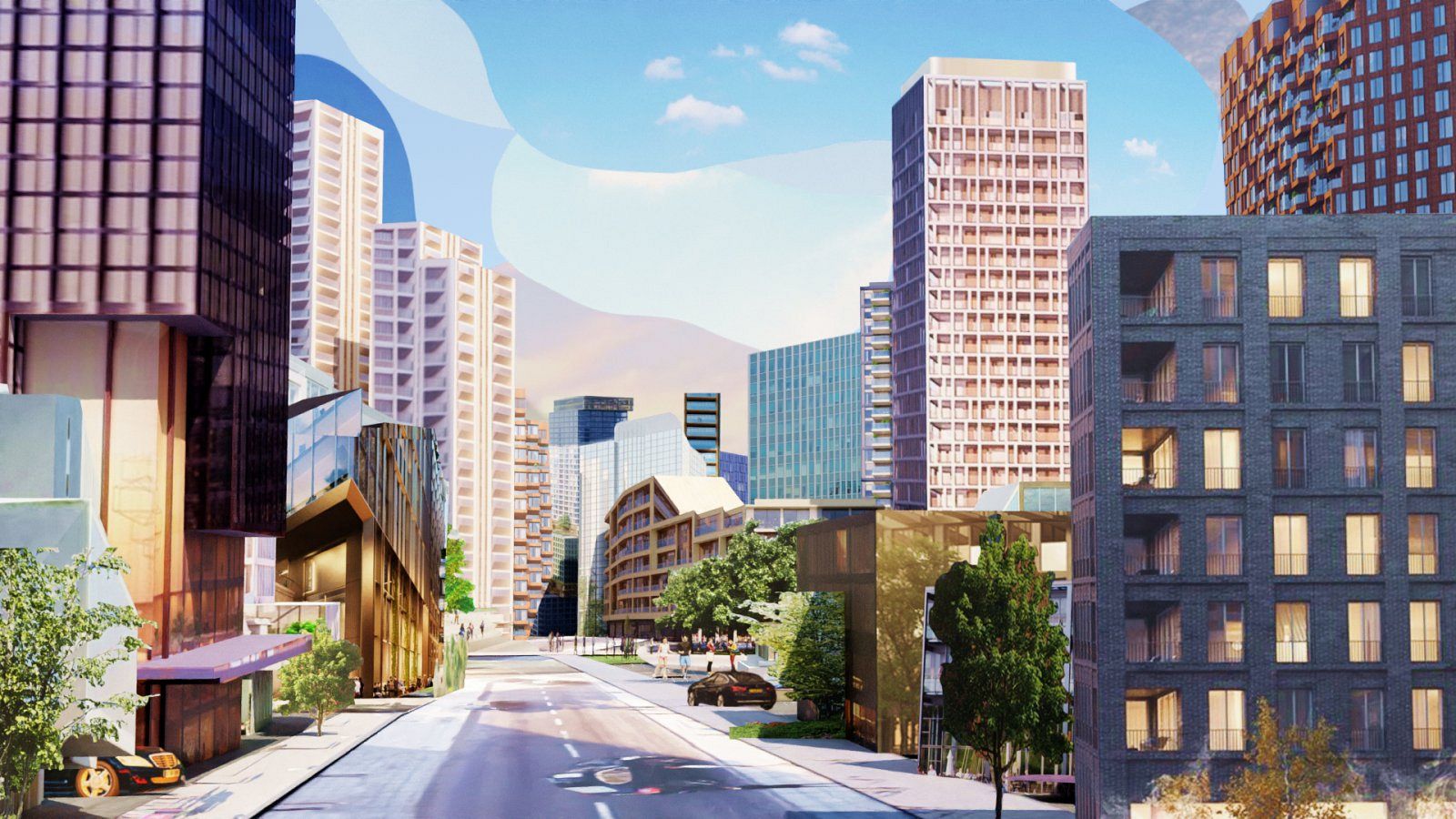
Sophie Czich
Keywords: City, Future, Collage
sophieczich@gmail.com
sophieczich.com/
www.instagram.com/sophieczch/
Architectural renders are highly realistic images, commonly used for advertising, communication and marketing purposes. They are performative visuals, depicting places that have yet to exist. Happy human archetypes are pasted in the ‘perfect’ house, which is placed in an idealised environment. At the core of this peculiar world-building convention, the narrative of hyper-perfection fashions a sleek paradise, propels capitalist norms and shapes our collective imagination of desirable lifestyles, cities and potential futures.
Where the facade bends plays with these 'neither real nor imaginary’ places. With collaged fragments of renders, the video reassembles a new space, a stage for a journey through the backsides, absurdities and ruptures of such smooth surfaces.
____ more about the process
The past two years, I have been busy trying to understand the dynamics that shape our cities and everyday lives, as well as the representations of functional and ideal humans and settings. In my thesis, I have focussed on the impact of neoliberal economics on the cities rhythms, and on our ability to live, but also re-invent the urban environment. For doing so, I have been relying on texts from Henri Lefebvre, David Harvey, Michel de Certeau, Failed Architecture, among others. For my graduation project, I have been diving into the current representations of idealised futures, wondering how the leading narrative is fashioned and repeated.
Architectural renders intrigue me for many reasons. They play a role at different moments of a place's development, toward different public. For instance, they are used for advertising to potential investors, as communication to convince the public, or for creating a marketable image and storytelling. The temporality of these representations is interesting, for they exist before the place they picture and thus influence the place making by itself. They stand halfway between an imaginary world and a future that will physically take place. The role of the designer in this process is also another strong aspect. Having these images created from scratch means that every object, every colour, every character has been chosen and thought through. One could then argue these performative images are practises of world-building per se. A world which come up with its set of value and norms.
My approach toward these images followed two main attitudes. First, a frank curiosity, where I would attempt at understanding how they were made, by whom, for which reason, with which tools and which technics. Second, a more critical look, with which I was thinking through the connotations of each choice, the reason behind some visuals, the context around some emerging projects, and more generally the aesthetic and ideals represented before my eyes.
I have created a big playground for myself, preparing more than four hundred cut-outs of architectural renders : people, facades, trees, skies, public spaces, indoor spaces, etc. I disassembled and reassembled these elements, playing with them whether on flat surfaces or mapped on 3D meshes within a Blender environment. This way, I came up with an "out-of-time" city, which deals with the way architectural renders create a dreamscape. It was not about reproducing yet another perfect landscape, but about how these images are constructed, assembled, and with which sort of elements. With this giant collaged space, I explored the absurdities and superficiality of architectural renders, questioning what sort of paradise, ideals and perfection they display and advocate for.
The music and soundscape have been produced by Juanlu Montoro and Ana Becerra Martínez following a similar structure as the images : starting from melodies matching the "perfection" representations, and slowly-but-surely distorting them.
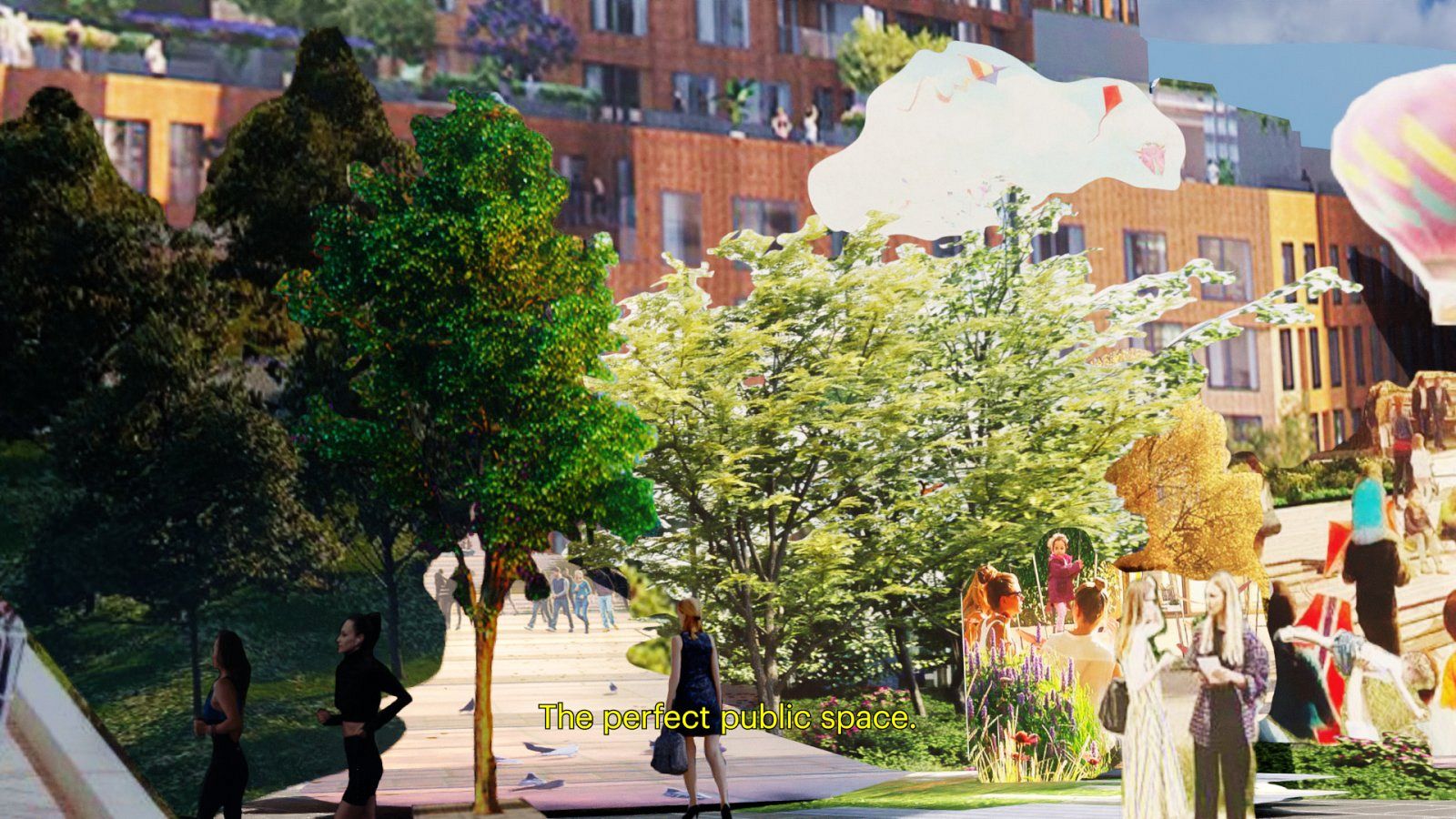
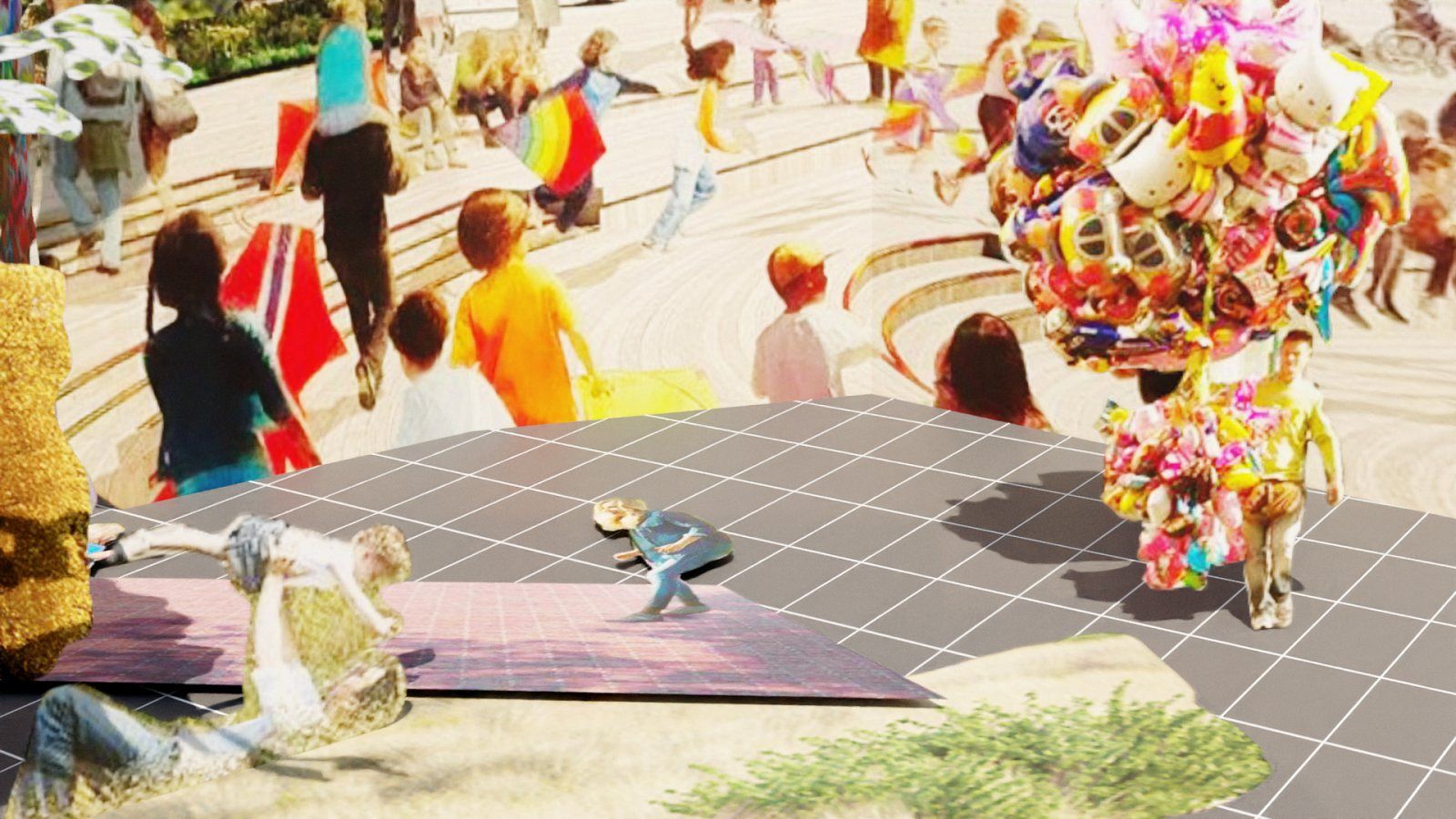
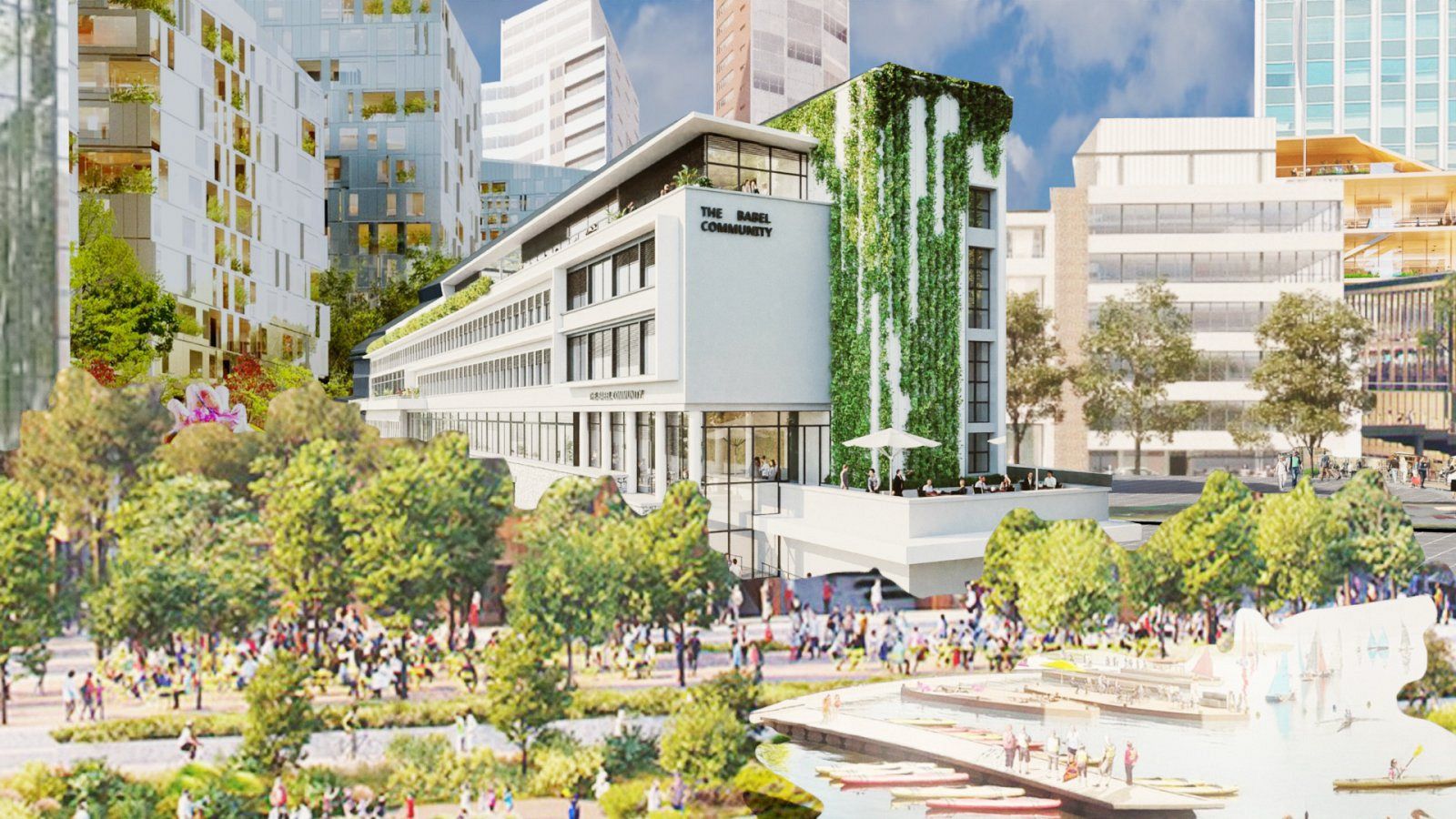
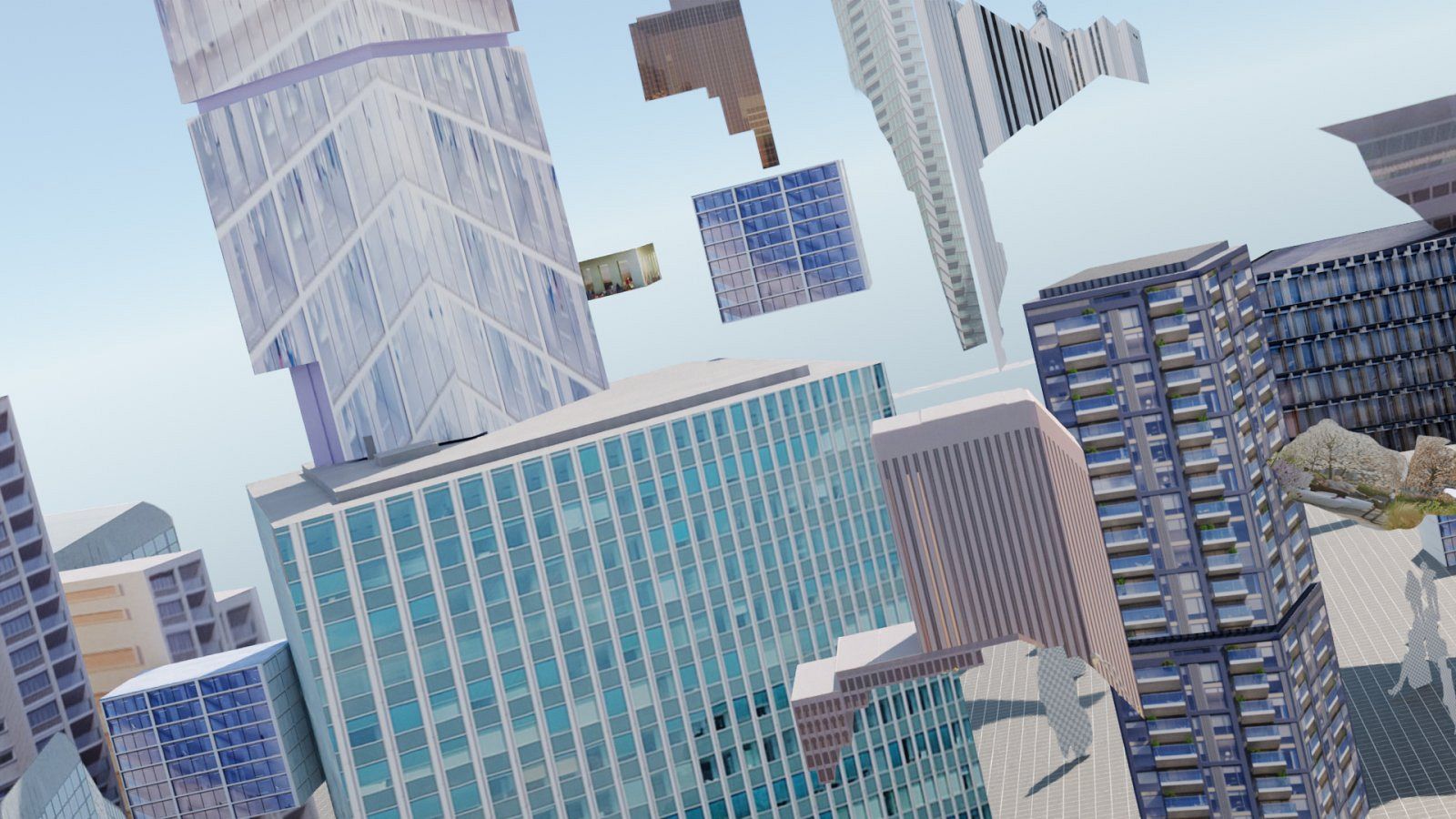

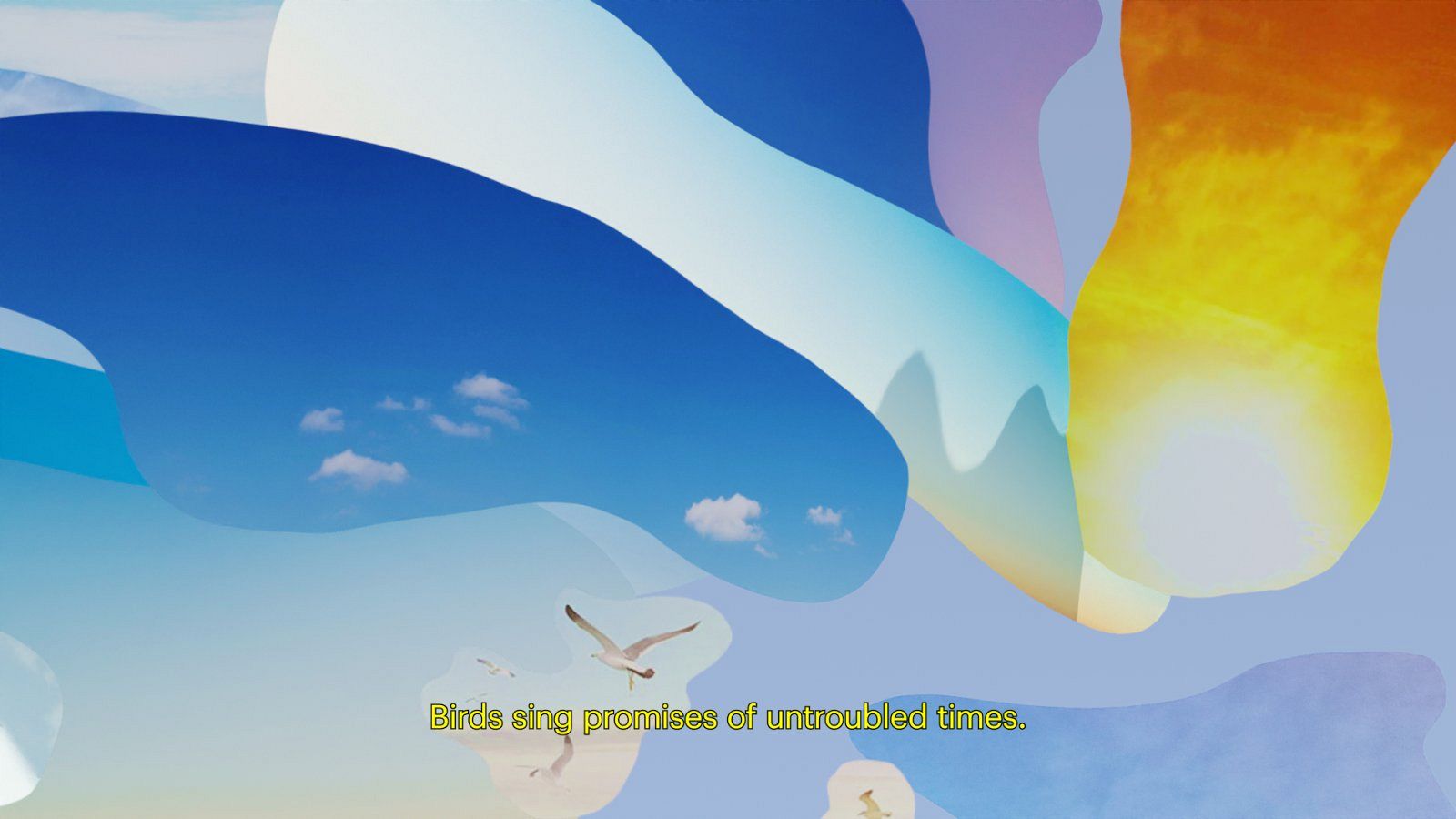
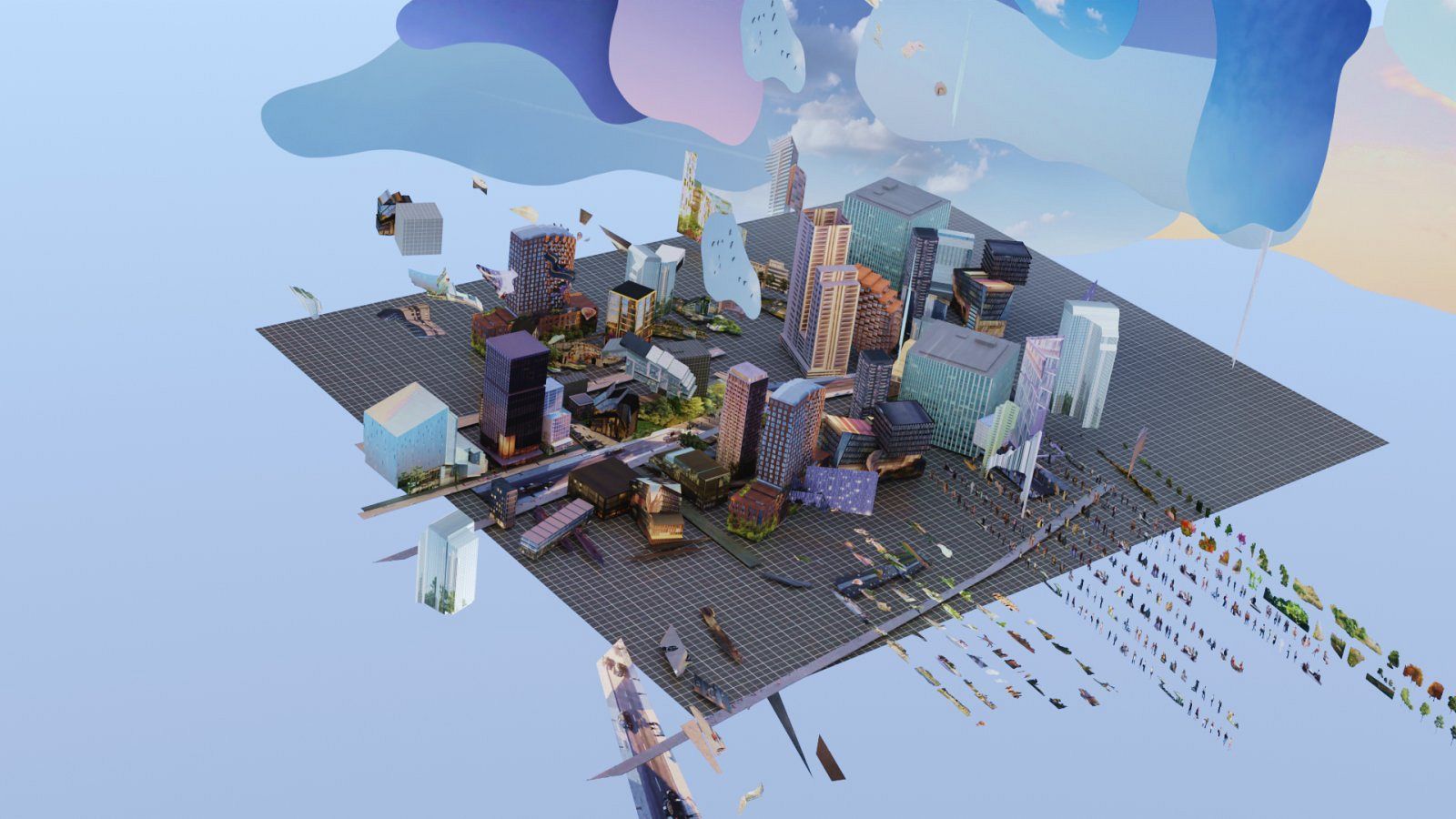

Accelerated rhythms in the city – on efficiency, repetition and collective intervals
Thesis
In an attempt to understand how power structures are carving the spaces we live in, this thesis constituted an exploration of the modern economic rhythm and its impacts on our urban environment. I argued that modern economics favors an accelerated rhythm with a single logic, visible among others in the way places are designed. The curated, scripted experience of cities in everyday life was tackled in the first chapter. This first section went from the study of former urban planning and their consideration for clarity and efficiency to the current neoliberal strategies at work in cities.
The rhythm of capitalism imposed upon people creates a vital need for rest and distraction. Proceeding from inhabiting to visiting a place, the second chapter discussed urban tourism as the common answer for escaping daily stress. However, mass-tourism appeared to be yet another repetition of the same modern rhythm. It is embedded in values of efficiency and rentability, both for the individuals who want to invest in cost-effective leisure and for cities themselves.
Facing the rhythm enforced by capitalist requirements and the difficulty to find suspended moments within this pace, the third chapter was an invitation to create and foster spaces and temporalities of resistance through ethics, attention and opening of possibilities. In this last section, I stated that the attitude of the guest rather than the visitor can bring the hoped-for respiration, but also provides a tool to navigate in a plurality of worlds and the disorientation that comes with it. When benefitting from this attitude, urban spaces can turn into sites of collective refusal of a destructive tempo, by paying attention to interstices and commons. In times when social and ecological conditions will likely lead us to drastic changes, it is needed to envision new ways to inhabit cities together. To create and cultivate spaces of care, where time is not a loud pulsation that keeps us under pressure, but a sum of complex rhythms we can playfully explore.